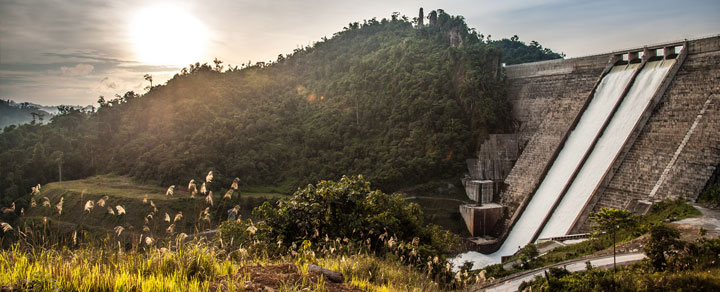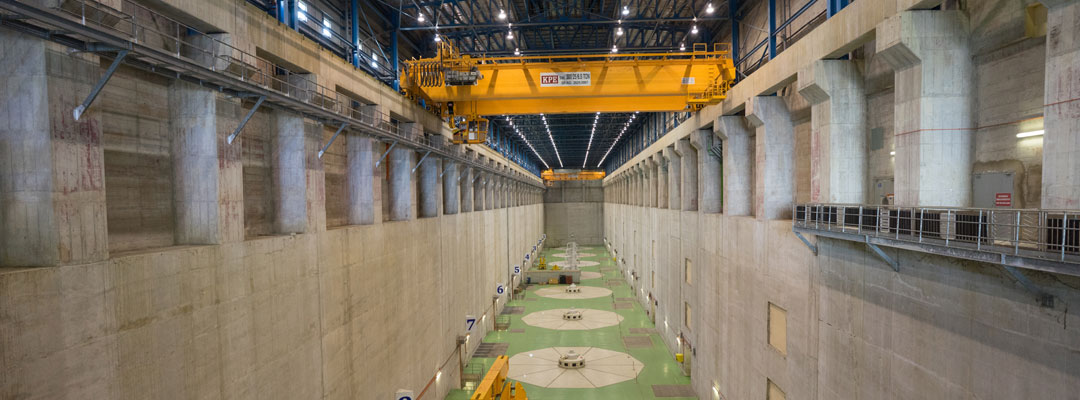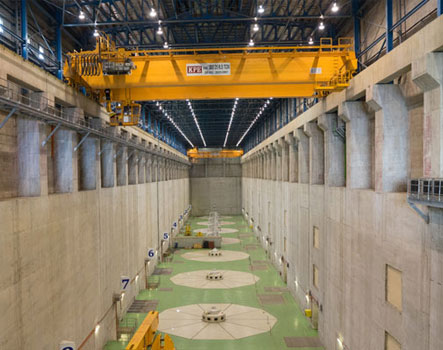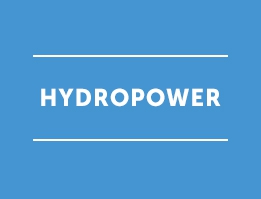Blessed with high rainfall and an abundance of rivers, Sarawak provides affordable, renewable energy through hydropower developments. Our first hydroelectric plant (HEP) at Batang Ai (94MW) was commissioned in 1985, with Bakun HEP (2,520MW) in 2011, followed by Murum HEP (944MW) in 2014. Currently, Baleh hydroelectric project (1,285MW) is under construction and is expected to be commissioned by end of 2030.
The total available capacity of our large hydro plants is 3,558MW. In addition to large hydroelectric projects, Sarawak Energy has also developed small hydropower plants that support off-grid communities and rural electrification in Sarawak’s many remote villages.
Batang Ai Hydroelectric Plant
Batang Ai, Sarawak’s first hydroelectric plant, commenced operations in 1985, captures the stored energy of a 90km² reservoir impounded by a dam 85m high and 649m wide. It has functioned smoothly for over 30 years, delivering up to 108MW of power to Kuching via a purpose-built 275kV transmission line. The station is refurbished and upgraded to serve for another 30 years.
The project has transformed the lives of local communities, who enjoy much better access to education and healthcare and to markets for their agricultural produce. Many have also become involved in ecotourism, driven by the unique culture of the local Iban people and the spectacular rainforest of the project catchment area. The local orangutan population has risen steadily since the establishment of the 120,000-hectare catchment area, which is now one of the most densely populated orangutan habitats in Borneo with more than 1.7 animals per square kilometre.
Murum Hydroelectric Plant
Murum HEP is located on the Murum River in the upper Rajang River basin, 200km from Bintulu. It is designed to produce 635MW (constant) and 944MW (peak) from a 2,750km² catchment area feeding a 270km² reservoir. Construction began in 2008 and by mid-2015 the station was fully operational, delivering its specified power into the state grid. Murum’s ecological features include the world’s tallest stepped chute spillway, which aerates overflow water and reduces its kinetic energy. This helps preserve the riverine ecosystem, which is further protected by a 7.5MW ecological power station that supplies power to the nearby resettlement areas and also conserves the 13km stretch of the Murum River between the dam and the powerhouse. In addition, the dam crest was redesigned to preserve the Batu Tungun rock formation, sacred to the local Penan community.
The Bakun HEP is located on the Batang Balui, the upper course of the Rajang River, approximately 37km upstream of Belaga town. The project comprises a hydroelectric power plant, with an available capacity of 2,520MW, and a power transmission system to connect with the existing transmission network in Sarawak. The Bakun HEP Plant has been operational since 2011, and have been injecting generation ranging from 1,700MW to 2,110MW depending on the grid demands. Bakun Concrete Faced Rock-fill Dam is still the tallest and largest dam in Southeast Asia, standing at 205m high with a rock fill volume of 16.93 million m³. The CFRD holds up a large reservoir with a surface area of 695km² and a catchment area of 14,750km².To ensure the dam integrity, a gated spillway structure with chutes and flip buckets was constructed, with a capability of discharging 15,000m³ of Probable Maximum Flood (PMF) event safely downstream. Bakun HEP Plant is the largest power generation in Sarawak and supports the Sarawak Corridor of Renewal Energy (SCORE) initiative in Samalaju Industry Park for energy-intensive heavy industries.






